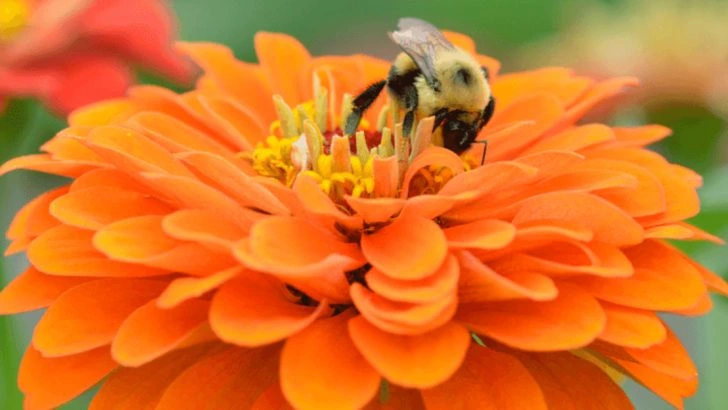If your garden’s quiet, you’re doing it wrong. Bees should be everywhere—buzzing, bumbling, getting their fuzzy little legs covered in pollen like it’s a job (because it is). Without them, your harvest doesn’t stand a chance. So let’s lure them in. Not with sugar water or gimmicks—but with flowers they can’t resist. We’re talking full-on bee magnets. The kind of blooms that say, “Hey, pollinators, party over here!” Plant the right ones, and your whole garden shifts. More bees. More movement. More zucchini than you can pawn off on your neighbors. And yes, while some flowers roll out the red carpet, others just get in the way. We’ll call those out, too—so your garden isn’t wasting space on bee-repelling divas. Get ready to plant like you mean it. The bees are listening.
Lavender
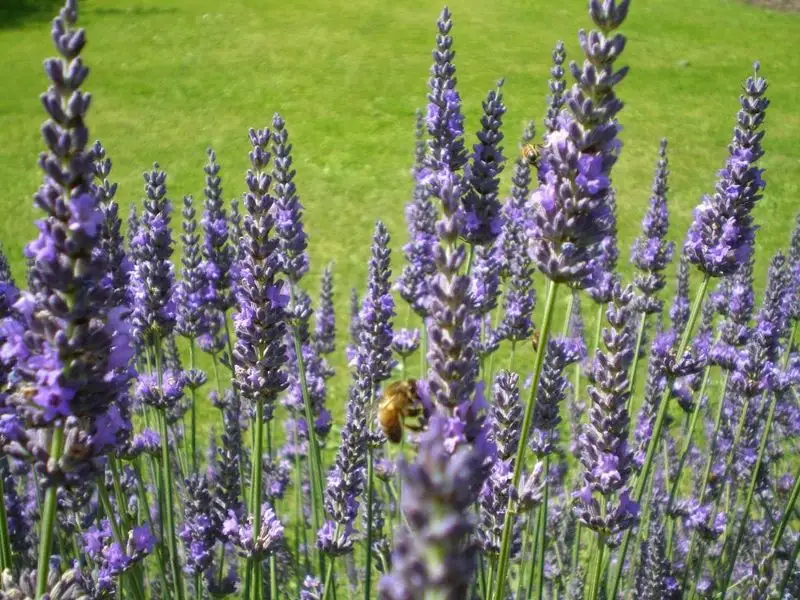
Lavender’s delicate purple blooms not only captivate the eyes but also beckon bees with their aromatic allure. Imagine a gentle breeze carrying the sweet scent across your garden. This perennial favorite is known for its calming fragrance. In addition to attracting pollinators, lavender can be used in cooking and crafting. Its versatility and beauty make it a must-have in any bee-friendly garden. Historical uses of lavender range from medicine to mummification. A garden with lavender is not just appealing to bees but adds a touch of history and aroma to your outdoor space.
Sunflowers
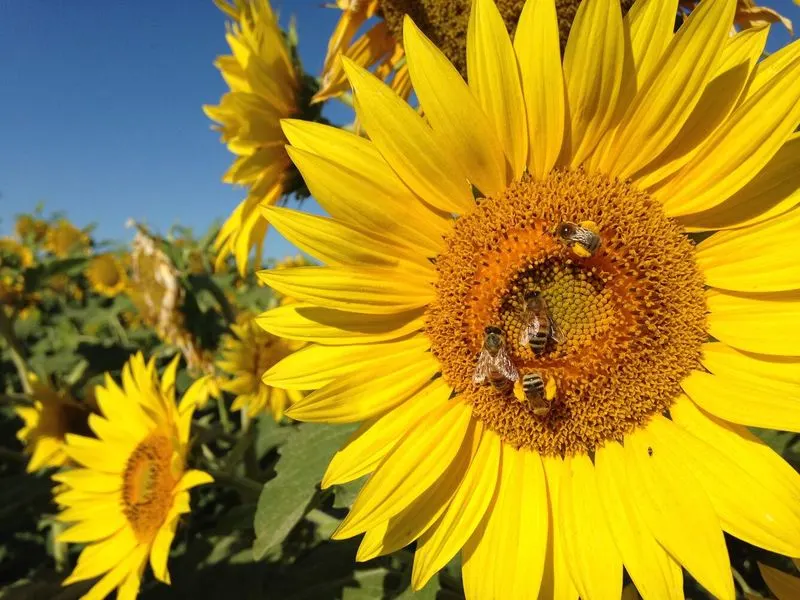
Sunflowers stand tall and proud, their golden heads a beacon for bees from afar. Known for their cheerful disposition, these giants of the garden provide ample nectar. Bees dance around them in a mesmerizing ritual, ensuring pollination success. Sunflowers are not only visually striking but also an excellent source of seeds. Children often marvel at their height, and gardeners appreciate the bountiful harvest. Historical records show sunflowers were cultivated by Native Americans over 4,000 years ago. Their enduring popularity lies in both their beauty and utility.
Borage

The star-shaped borage flower is a vibrant blue gem in any garden. Its nectar-rich blossoms are irresistible to bees. Borage has a long history as a medicinal herb, often used to encourage courage. The plant’s cucumber-flavored leaves add a unique twist to salads. It’s a self-seeding annual, ensuring its return year after year without much effort from the gardener. Bees flock to its lively flowers, making it a pivotal player in garden pollination. The charm of borage lies in its ability to thrive with minimal maintenance.
Bee Balm
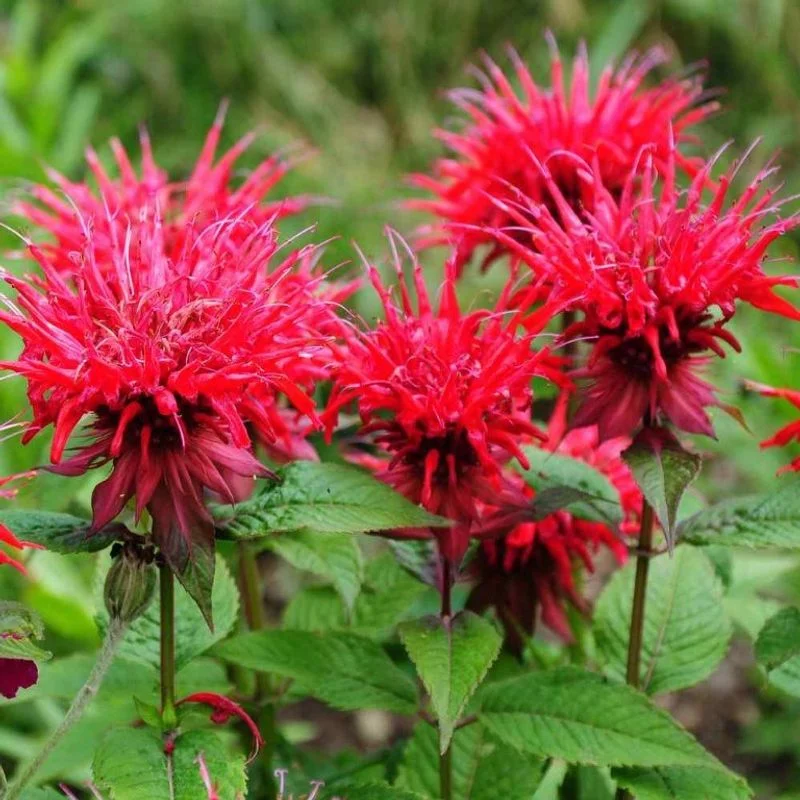
Bee Balm, with its fiery red blossoms, is a magnet for bees. This North American native thrives in sunny spots, offering a burst of color and fragrance. Its vibrant blooms are not just for show; they play a crucial role in attracting pollinators. The plant’s aromatic leaves can be used to brew tea, adding to its appeal. Known for its medicinal properties, bee balm has been cherished by Native Americans for centuries. Its striking presence in the garden ensures bees have ample reason to visit, making it a gardener’s ally.
Coneflower
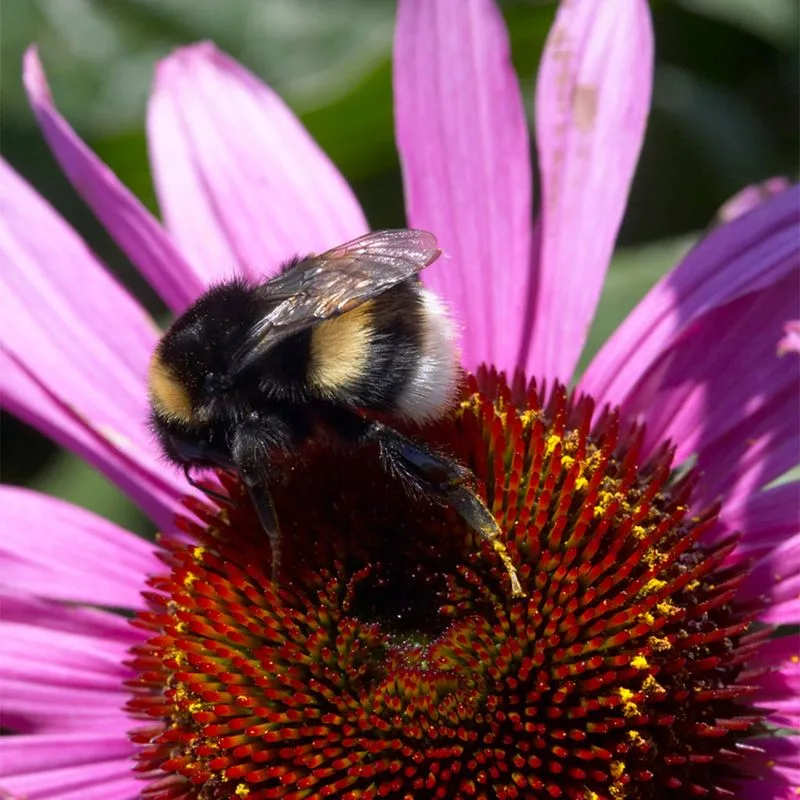
Coneflowers, or Echinacea, are beloved for their vibrant petals and durability. Bees and butterflies alike find them irresistible. These perennials flourish in a variety of conditions, making them perfect for beginners. Echinacea has been used in traditional medicine for its immune-boosting properties. Their long-lasting blooms add a splash of color throughout the summer. Coneflowers are not just bee-friendly; they are a testament to resilience and beauty in the garden. Their ability to attract and sustain bee populations makes them invaluable.
Zinnias
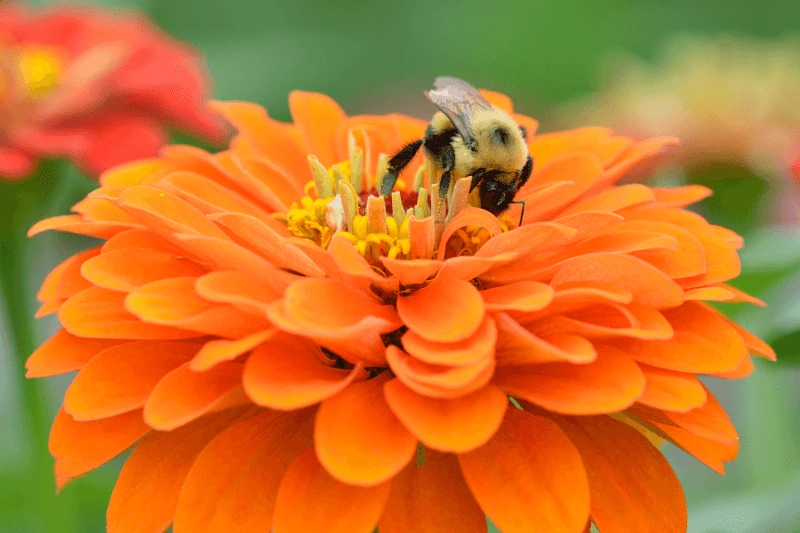
Zinnias bring a burst of color with their vibrant, daisy-like blooms. They are a favorite among bees, offering plentiful pollen. Easy to grow and maintain, zinnias thrive in the heat of summer. They range in color from soft pastels to bright hues, providing diversity in any garden setting. Gardeners appreciate their ability to attract beneficial insects. Historically, zinnias were native to Mexico and have been cultivated since the 18th century. Their endless variety and ease of care make them a delightful addition to any bee-friendly garden.
Coriander
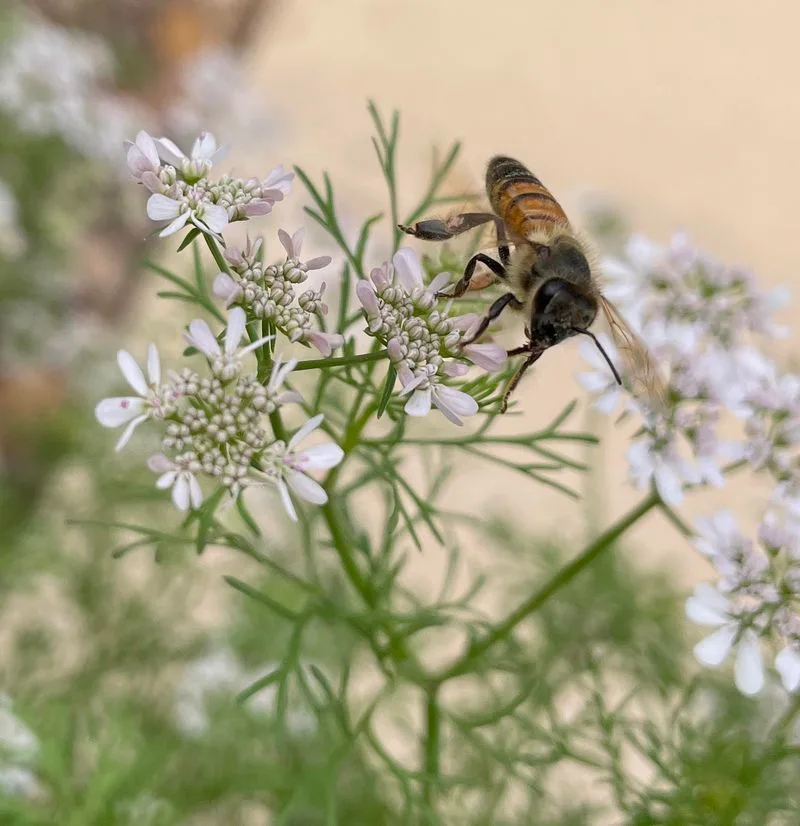
Coriander, or cilantro, offers delicate white blossoms that bees find irresistible. This herb does double duty, attracting pollinators while also providing leaves and seeds for culinary use. Its fragrant leaves are a staple in many cuisines, and the seeds are known as coriander. Bees enjoy visiting the flowers, ensuring the plant’s continued vitality. Gardeners value its rapid growth and dual-purpose nature. Historically, coriander has been used since ancient times, with mentions in Sanskrit texts. Its presence in the garden supports both pollinators and chefs alike.
Marigolds
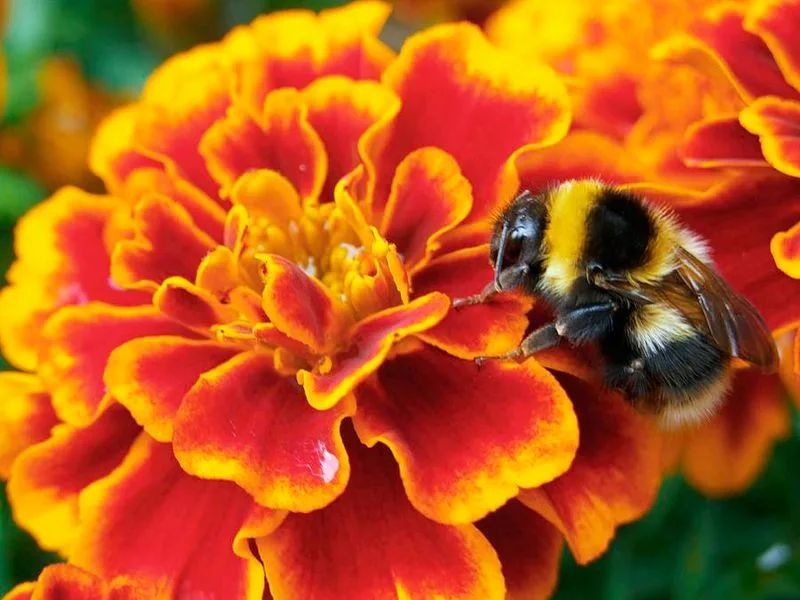
Marigolds are renowned for their vibrant orange and yellow blooms. Bees are drawn to their bright colors and abundant pollen. These hardy annuals are easy to grow, making them perfect for novice gardeners. Their spicy scent repels many garden pests, offering natural protection. Marigolds have been used in traditional ceremonies and as natural dyes. Their cheerful presence and pest-deterring qualities make them a staple in gardens aiming for both productivity and beauty. By planting marigolds, gardeners create a vibrant, bee-friendly environment.
Clover
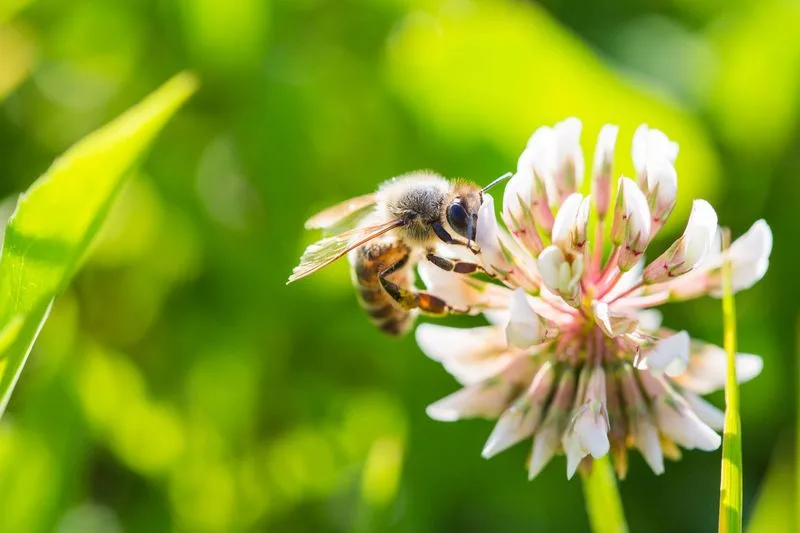
Clover’s modest white flowers may seem unassuming, but they are a crucial component in attracting bees. Often used as ground cover, clover enriches the soil with nitrogen, benefiting the entire garden. Bees are attracted to its nectar-rich blooms, which thrive throughout the growing season. Traditionally used in agriculture, clover is a symbol of prosperity and good fortune. Its ability to improve soil health makes it invaluable in sustainable gardening practices. Clover’s simple beauty and ecological importance make it a valuable addition to any garden.
Tomato Flowers
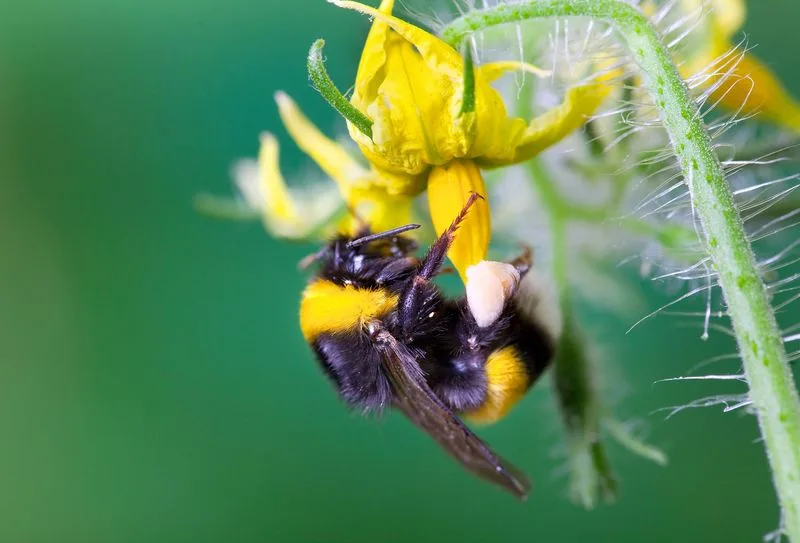
Tomato flowers may seem understated, but they are essential for fruit production. These yellow blossoms rely on bees for effective pollination. Without them, tomatoes would struggle to set fruit. The gentle buzz of bees around the flowers is music to a gardener’s ears, promising a bountiful harvest. Tomatoes have a rich history, originating in South America and becoming a staple worldwide. Their flowers play a pivotal role in transforming blooms into juicy tomatoes. By encouraging bees, gardeners ensure a fruitful and delicious yield.

